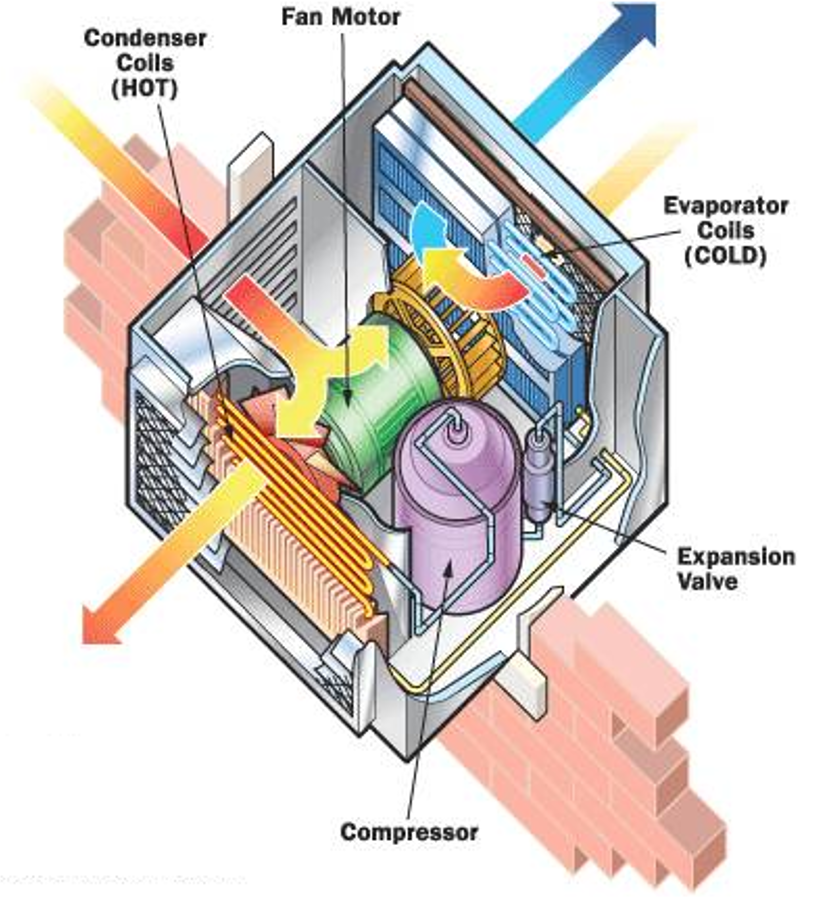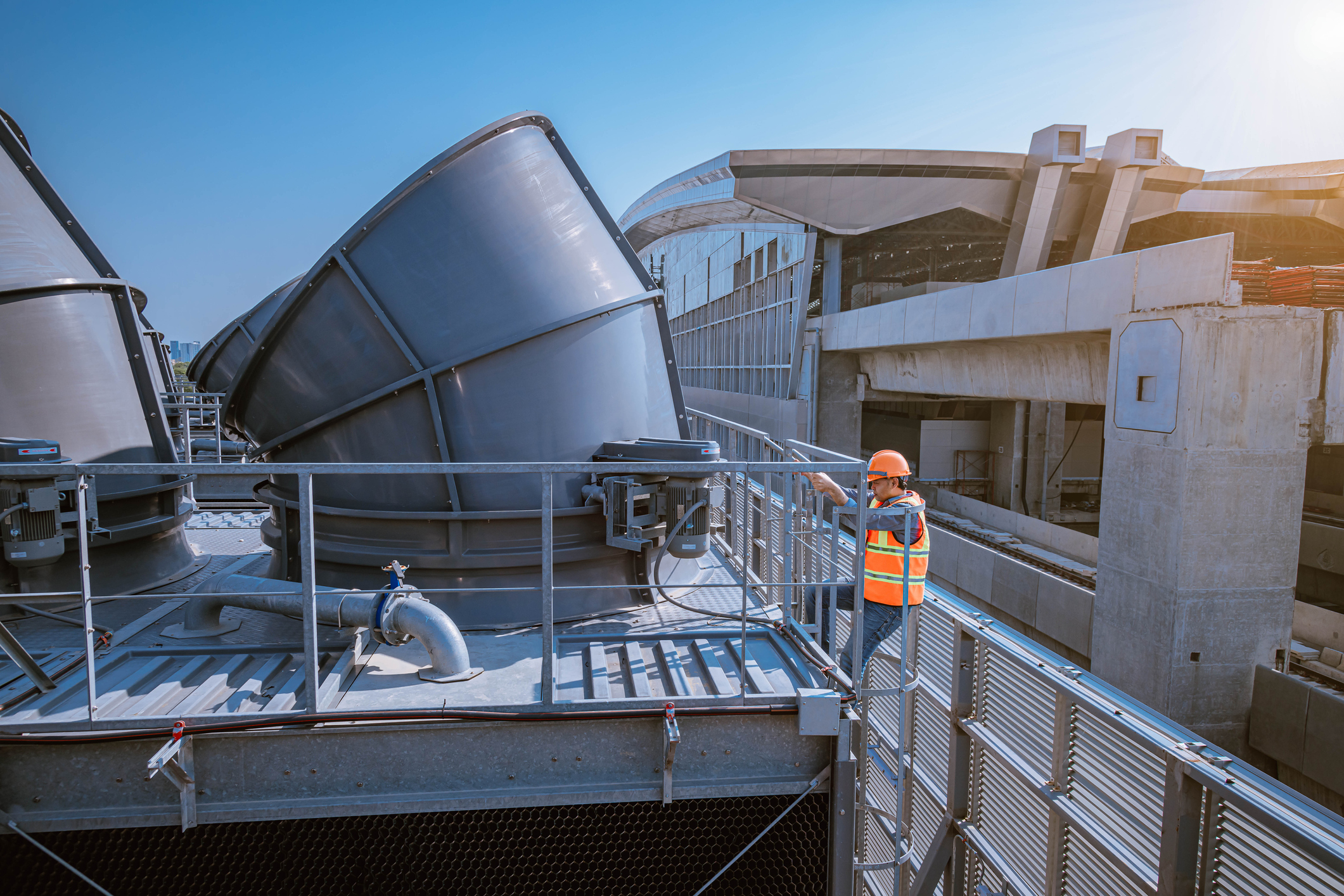A packaged rooftop unit, or RTU, is a type of HVAC system that contains all the components needed to provide conditioned air in one compact unit. You typically use packaged rooftop units in light and large commercial applications. They are very popular with retail and industrial properties.
A packaged rooftop unit is usually a large metal box containing the following components:
- Expansion device
- Evaporator
- Compressor
- Air-cooled condenser
Packaged rooftop units typically connect directly to a ductwork system that distributes the conditioned air through a space and returns it to the packaged rooftop unit.

How a Packaged Rooftop Unit Works
First, air returns back to the packaged rooftop unit from the space the unit is ventilating. Some units also mix outdoor air with the returning air to produce fresher air for the space.
The air then moves through a rack of filters. Then it continues to the cooling coil which chills air by running it over refrigerant. The refrigerant is cooled with a standard refrigeration cycle.
The air then flows through a blower, leaving it conditioned and ready for the space. Some units have small heating elements near the blower to further adjust the air’s humidity. There is usually a clear, insulated divide between the evaporator coils that cool the return air, and the condenser coils and compressor that eject heat to the atmosphere.
Here’s a view of a basic packaged rooftop unit:

A basic thermostat typically controls packaged rooftop units. However, depending on the application they can be a part of a more complex control system.
There are also some specialized applications for packaged rooftop units. For example, some units condition 100 percent outdoor air. So all the air running through the unit comes from outside, and the unit uses no return air. These units are known as 100 percent dedicated outdoor air units, or makeup air units. They require increased insulation, additional parts, and potentially more energy to run. Their obvious advantage is that they circulate fresher air than normal packaged rooftop units.
Ensure Your HVAC is Well Maintained
A high functioning HVAC system is always important to any commercial building—but even more so during a pandemic. A strong HVAC maintenance program is a selling point to help encourage re-occupancy and attract new tenants in CRE’s next phase. For a step-by-step guide to preventing COVID-19 transmission with your HVAC system, download Building Engines’ HVAC Maintenance Checklist: Help Prevent COVID-19 Transmission.












